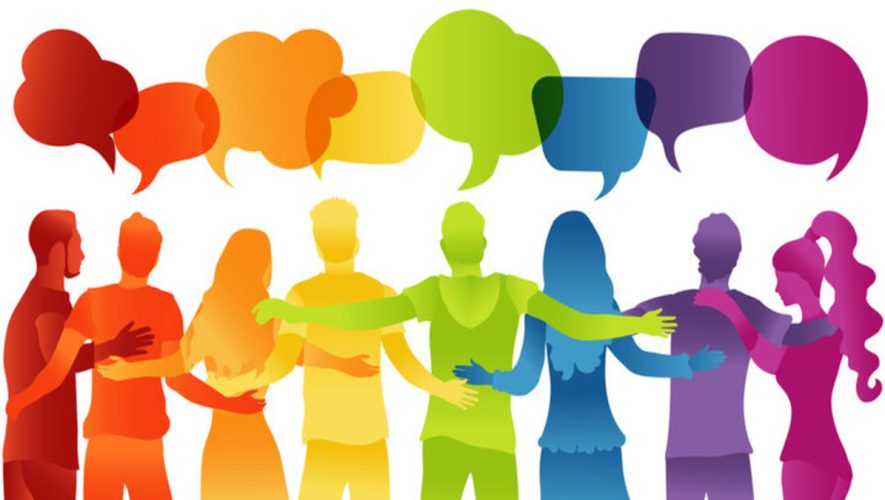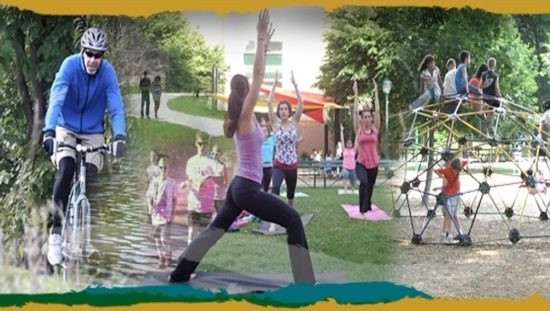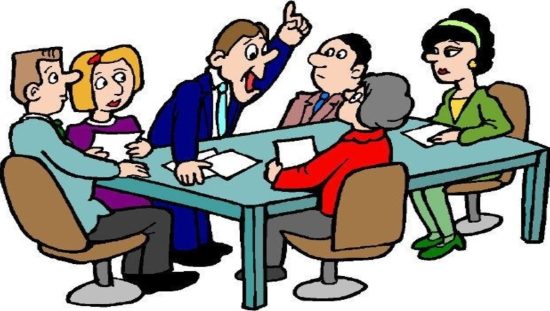Socialization cannot take place in a vacuum. Individuals, groups and institutions create the social context for socialization to take place. In general, it may be said that the total society is the agency for socialization and that each person with whom one comes into contact and interact is in some way an agent of socialization. Socialization is found in all interactions but the most influential interaction occurs in particular groups which are referred to as agencies of socialization.
The various agencies can be classified as formal/informal, active/passive or primary/secondary. However, there is no clear demarcation as all of them are very much interrelated. We shall examine the various agencies at three levels, viz., micro level, meso level and macro level.
Micro-Level Socialization
Micro level entails small group interaction. This level is vital because face to face, intense, and intimate interaction forms the basic formulation. Under micro-level socialization, we will discuss the role played by family, peer group and neighborhood.
Family or Home
The family as a basic social institution has always been regarded as a core component for the development of the individual as well as for the society and the mankind. An infant embarks on the journey of life with the love and care of his/her family. Again it is in the family context that he/she imbibes the first lessons of life and tries to imitate the habits, customs and behavior patterns of her/his family members.
The family is the primary agency of socialization. It is here that the child develops an initial sense of self and habit-training—eating, sleeping etc. To a very large extent, the indoctrination of the child, whether in primitive or modem complex society, occurs within the circle of the primary family group. The child’s first human relationships are with the immediate members of his family—mother or nurse, siblings, father and other close relatives.
Peer Group
Besides the world of family and school fellows, the peer group (the people of their own age and similar social status) and playmates highly influence the process of socialization. Peer group is constituted by members who have some common characteristics such as age (same stage of development and maturity) or sex, etc. It includes playmates, family members, neighbors or companions in day care centers/schools.
Peer group influence may be traced from the time a child is three or so when s/he begins to mingle with people outside the immediate family. From such an early age, children form meaningful relationships with their peers, who seem to exert influence on them. If you happen to watch children at play you may observe how they incorporate various strategies like negotiation, dominance, leadership, cooperation, compromise, etc. without any directions from elders.
Peer socialization equips them with the ability to understand the nuances of group interaction and act accordingly. The group may encourage a young person to follow pursuits that society considers admirable. On the other hand, the group may encourage someone to violate the culture’s norms and values by driving recklessly, shoplifting, stealing automobiles, engaging in acts of vandalism and the like. Some studies of deviant behavior show that the peer group influence to cultivate behavior patterns is more than the family.
Neighborhood and Local Community
Neighborhood can be said to be a local social unit where there is constant interaction among people living near one another or people of the same locality. In such spatial units, face to face interactions frequently take place. Such interactions are at both physical and social environment wherein children get easily affected. In view of this, it is only natural that the community should play an important role in influencing the process of socialization.
This is particularly true of villages where there is much more interaction among the various families. The neighborhood uncles and aunties are a source of social learning. If the child is surrounded by people who are warm and cooperative, it will get definitely transmitted to him/her. On the other hand if the locality is peopled by aggressive and violent group, it is possible that such children may learn unsocial or anti-social behaviors.
Meso-Level Socialization
Meso level units are intermediate size social units smaller than the ones at macro level but larger than the micro units like the family or the local community. It may include schools, educational institutions, political groups, etc. These organizations and institutions may not be as big as the global units but are beyond the personal experiences encountered in everyday life.
School
School refers to a whole range of formal educational institutions. In the words of Brubacher, “School is an active, direct and formal agency of education and socialization”. School is a miniature society where children of different families, different religions, different castes and economic status come together, take part in collective activities and learn to adjust to the society. It is in school that whatever the child has learnt hitherto through family, peer group or community gets stabilized.
School socialization not only helps the growing child in gaining academic insights but also many values like the importance of punctuality, discipline, resilience, team work, cooperation, etc. Another significant role played by schools is with regards to gender socialization. Children who are deprived of school education therefore will have only narrow socialization unlike their counterparts in schools who have scope for greater interaction, exposure and wider socialization.
Religion
Religion is another agency which is involved in the process of socialization, particularly in the development of values and attitudes. You must have noticed how religious rituals like weddings, burials, birth day celebration and festivals bring people together wherein they express solidarity with their groups. Members of a particular religious group enjoy a sense of belongingness. It is but natural that those who are outside the group feel alienated. As one of the potential agents of socialization, religion exposes its members to spiritual world view and coaxes them to venture into a larger society.
Culture
Culture is a very broad term. It may be defined as the manmade part of our environment. People belonging to different religions may share the same culture; thus we see many things common to the people of Pakistan whether they are Muslims, Hindus, Christians, Parsis or Sikhs. In any culture people tend to develop a basic common system of values, attitudes motivations etc., in-spite of differences. Hence, Culture plays a very important role in providing a base for the process of socialization and also for bringing about similarities in personality and social behavior.
Social Class
Social class or what we may call ‘socio-economic class’ is another factor which plays a crucial role in the process of socialization. Social class is neither legally defined nor religiously sanctioned. It is generally said to be a stratum of people occupying similar positions, wealth and income.
Our society is sorted or layered into several social classes. Each of these classes has its own beliefs, attitudes, opinions and world views. So it is but natural that a child born to a particular class will be socialized by the norms dictated by the social class. Studies have also shown that children from lower classes acquire a sense of independence and self-reliance much faster than children from higher income groups. Children from higher income groups have often been found to be more dependent. Thus, it may be seen that the social class to which a child belongs has a great deal of influence in guiding the process of socialization and ultimately the social behavior of the person. At the same time, it can also be seen that it is the middle class which readily forsakes values.
Macro-Level Socialization
Macro level comprises larger units. Here we look at the state, global forces and international units.
The State
Social scientists have increasingly recognised the importance of the state as an agent of socialisation because of its growing impact on the life cycle. The protective functions, which were previously performed by family members, have steadily been taken over by outside agencies such as hospitals, health clinics and insurance companies. Thus, the state has become a provider of child care, which gives it a new and direct role in the socialisation of infants and young children.
Not only this, as a citizen, the life of a person is greatly influenced by national interests. For example, labour unions and political parties serve as intermediaries between the individual and the state. By regulating the life cycle to some degree, the state shapes the station process by influencing our views of appropriate behavior at particular ages.
Mass Media
The mass media comprises both the print media such as books, newspapers, magazines, etc., and also non-print media such as radio, television, and movies The goal is to reach out to the mass or large number of people without establishing any personal contact between senders and receivers. It permeates into all aspects of society, be it political, linguistic, cultural or spiritual. Media is all pervasive; its functioning is very subtle and has both positive and negative influences. The media is instrumental in defining what we think, how we look upon our social place and issues in the society.
Social Media
Social media provides a platform for people to share their common interests, likes and dislikes and build social contacts. Internet and cell phones are increasingly establishing commonness and connectedness among people all over the world. Now children are getting exposed to a world beyond their homes and community to the global community and are being socialized in such a way that they fit into a global world.
Social sites such as Facebook, Twitter, Instagram, etc. open up a new world altogether and expose the child’s mind into different cultures that he or she did not know and are introduced to a whole new world. The progress from Orkut to Facebook, twitter, Instagram, WhatsApp, Tumblr, have been so rapid that by the time one learns the nitty-gritty of one such site, he/she is bombarded with another. The accesses to such sites are not only through mass media on our computers but are easily available on our iPads and cell phones.
OTHER RELATED POSTS
Factors affecting the Individual Behavior



